Showing Spotlights 1033 - 1040 of 2781 in category All (newest first):
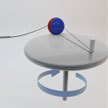 The most common method for making nanofibers employs electrospinning that uses an electrical charge to draw nanofibers from a polymeric solution. This technique utilizes large voltages and is strongly influenced by the dielectric properties of the material. It is also impossible to electrospin many biopolymers without blending with another polymer. Addressing these drawbacks, a team of researchers report a new method - magnetospinning - which utilizes a simple set-up that is independent of the dielectric constant of the solvent and polymer used.
The most common method for making nanofibers employs electrospinning that uses an electrical charge to draw nanofibers from a polymeric solution. This technique utilizes large voltages and is strongly influenced by the dielectric properties of the material. It is also impossible to electrospin many biopolymers without blending with another polymer. Addressing these drawbacks, a team of researchers report a new method - magnetospinning - which utilizes a simple set-up that is independent of the dielectric constant of the solvent and polymer used.
May 11th, 2015
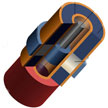 Classical semiconductor physics suggests that a single charge transport CMOS device cannot achieve ultra-high-performance and ultra-low-standby-power at the same time. Nanoelectronics researchers are trying to design devices that hit the 'sweet spot', i.e. where a charge transport device can provide its highest performance at its lowest power consumption, especially in its 'off' state.
In new work, researchers show a unique device concept which combines the advantages of a tunnel field-effect transistor for ultra-low OFF (leakage) current and ultra-steep sub-threshold slope for sharper and faster ON and OFF switching due to the FET's nanotube architecture.
Classical semiconductor physics suggests that a single charge transport CMOS device cannot achieve ultra-high-performance and ultra-low-standby-power at the same time. Nanoelectronics researchers are trying to design devices that hit the 'sweet spot', i.e. where a charge transport device can provide its highest performance at its lowest power consumption, especially in its 'off' state.
In new work, researchers show a unique device concept which combines the advantages of a tunnel field-effect transistor for ultra-low OFF (leakage) current and ultra-steep sub-threshold slope for sharper and faster ON and OFF switching due to the FET's nanotube architecture.
May 7th, 2015
 Presently, several techniques for detecting mRNAs are available,which include in situ hybridization and polymerase chain reaction. However, these single-point and end-point techniques require the killing of the cells and are thus unable to capture the expression of mRNA in real time and locality with high precision. In new work, scientists describe a new way of preparing functional DNA nanostructures that can provide accurate quantification and visualization of mRNA transcripts in living cells.
Presently, several techniques for detecting mRNAs are available,which include in situ hybridization and polymerase chain reaction. However, these single-point and end-point techniques require the killing of the cells and are thus unable to capture the expression of mRNA in real time and locality with high precision. In new work, scientists describe a new way of preparing functional DNA nanostructures that can provide accurate quantification and visualization of mRNA transcripts in living cells.
May 6th, 2015
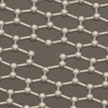 Counter intuitive to our idea of 'perfection equals best performance', researchers have shown that defects in nanocarbons could provide a breakthrough for increasing the quantum capacitance. By subjecting graphene layers to a reactive-ion etching process, the team has poked holes into graphene to create holey graphene, which can change the microscopic distribution of electrons and thereby increase the quantum capacitance of graphene by at least fourfold.
Counter intuitive to our idea of 'perfection equals best performance', researchers have shown that defects in nanocarbons could provide a breakthrough for increasing the quantum capacitance. By subjecting graphene layers to a reactive-ion etching process, the team has poked holes into graphene to create holey graphene, which can change the microscopic distribution of electrons and thereby increase the quantum capacitance of graphene by at least fourfold.
May 5th, 2015
 Upconversion luminesce materials are promising for widespread application ranging from optical devices to biodetection and cancer therapy, the near-infrared light excited upconversion materials are attracting much research attention. Researchers have achieved an ultra-strong and ultra-pure red upconversion in erbium and ytterbium co-doped lutetium oxyfluorides through size and morphology control. These nanoparticles, with extremely strong and pure upconversion are promising candidates as novel luminescent reagents for high-contrast bio-imaging and bio-labeling.
Upconversion luminesce materials are promising for widespread application ranging from optical devices to biodetection and cancer therapy, the near-infrared light excited upconversion materials are attracting much research attention. Researchers have achieved an ultra-strong and ultra-pure red upconversion in erbium and ytterbium co-doped lutetium oxyfluorides through size and morphology control. These nanoparticles, with extremely strong and pure upconversion are promising candidates as novel luminescent reagents for high-contrast bio-imaging and bio-labeling.
May 4th, 2015
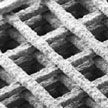 From a 3D printing perspective, graphene has been previously incorporated into 3D printed materials, but most of these constructs comprise no greater than about 20 volume % of the total solid of the composite, resulting in electrical properties that are significantly less than what has been achieced in new work. Here, researchers show that high volume fraction graphene composite constructs can be formed from an easily extrudable liquid ink into multi-centimeter scaled objects.
From a 3D printing perspective, graphene has been previously incorporated into 3D printed materials, but most of these constructs comprise no greater than about 20 volume % of the total solid of the composite, resulting in electrical properties that are significantly less than what has been achieced in new work. Here, researchers show that high volume fraction graphene composite constructs can be formed from an easily extrudable liquid ink into multi-centimeter scaled objects.
Apr 28th, 2015
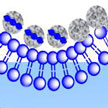 Biomineralization is the formation of inorganic materials in a biological environment, as it is found in bones, teeth and shells. Certain biominerals are also often associated with pathogeneses of tissues. The correlation of the composition of biominerals with pathogeneses of tissues has not been investigated systematically. In new work, researchers examine how the composition of biominerals correlates with the production of inflammatory cytokines associated with the stimulation of intracellular DNA sensors and by biominerals themselves.
Biomineralization is the formation of inorganic materials in a biological environment, as it is found in bones, teeth and shells. Certain biominerals are also often associated with pathogeneses of tissues. The correlation of the composition of biominerals with pathogeneses of tissues has not been investigated systematically. In new work, researchers examine how the composition of biominerals correlates with the production of inflammatory cytokines associated with the stimulation of intracellular DNA sensors and by biominerals themselves.
Apr 22nd, 2015
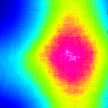 Plasmon lasers are promising nanoscale coherent sources of optical fields because they support ultra-small sizes and show ultra-fast dynamics. They can make possible single-molecule biodetectors, photonic circuits and high-speed optical communication systems. In new work, researchers have found a way to integrate liquid gain materials with gold nanoparticle arrays to achieve nanoscale plasmon lasing that can be tuned dynamical, reversibly, and in real time.
Plasmon lasers are promising nanoscale coherent sources of optical fields because they support ultra-small sizes and show ultra-fast dynamics. They can make possible single-molecule biodetectors, photonic circuits and high-speed optical communication systems. In new work, researchers have found a way to integrate liquid gain materials with gold nanoparticle arrays to achieve nanoscale plasmon lasing that can be tuned dynamical, reversibly, and in real time.
Apr 21st, 2015
 The most common method for making nanofibers employs electrospinning that uses an electrical charge to draw nanofibers from a polymeric solution. This technique utilizes large voltages and is strongly influenced by the dielectric properties of the material. It is also impossible to electrospin many biopolymers without blending with another polymer. Addressing these drawbacks, a team of researchers report a new method - magnetospinning - which utilizes a simple set-up that is independent of the dielectric constant of the solvent and polymer used.
The most common method for making nanofibers employs electrospinning that uses an electrical charge to draw nanofibers from a polymeric solution. This technique utilizes large voltages and is strongly influenced by the dielectric properties of the material. It is also impossible to electrospin many biopolymers without blending with another polymer. Addressing these drawbacks, a team of researchers report a new method - magnetospinning - which utilizes a simple set-up that is independent of the dielectric constant of the solvent and polymer used.
 Subscribe to our Nanotechnology Spotlight feed
Subscribe to our Nanotechnology Spotlight feed





